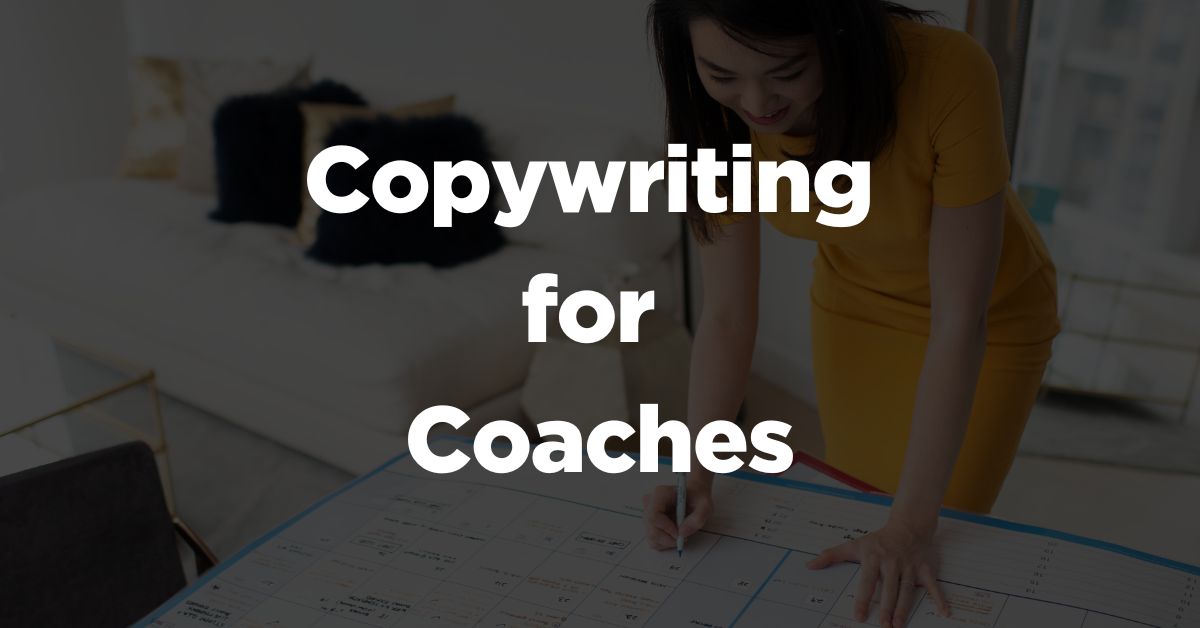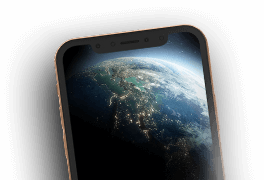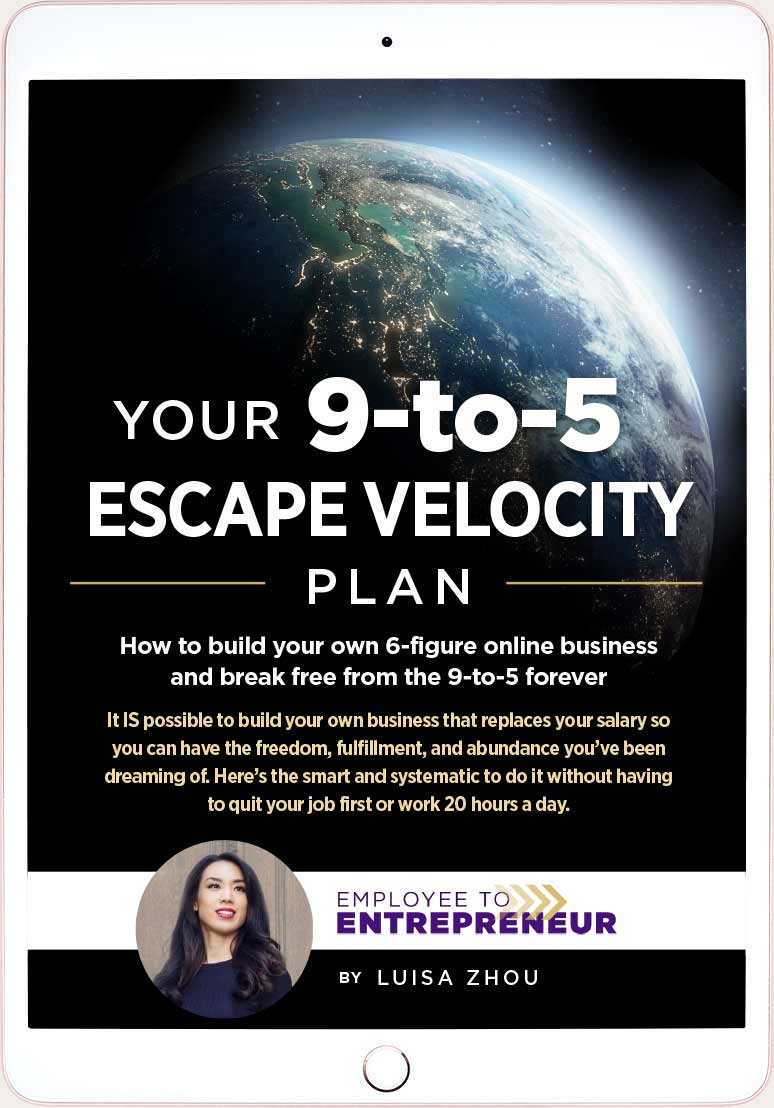This is your ultimate guide to copywriting for coaches.
If there’s one skill you should learn to build your business, it’s this one.
As a coach, you need to learn how to sell your services if you want to build a successful business. And that’s exactly what you do with copywriting.
Today, you’ll learn the most powerful steps for writing copy that sells your products and services.
Want to learn more? Read on!
You’ll learn:
- Why you don’t need to hire a copywriter
- How to write great copy
- Website copy for coaches
- Sales page copy for coaches
- The best copywriting books
Why you don’t need to hire a copywriter
Too many people think, “I’m not a writer so I can’t be a good copywriter” or “I hate writing.”
And so they overcomplicate it and think they need to hire someone to write their copy.
But the thing is:
If you can talk to people, you can write copy. You don’t have to be a master copywriter to sell your coaching program.
Instead, you just have to be good enough to attract your next, ideal client.
Plus, you’re the only one who truly sounds like you. A copywriter has to be really good at what they do to create copy that shows your personality.
Case in point:
I’ve spent hundreds of thousands on copywriters. And I never got copy that sounded like me or did what it was supposed to do – convince people and sell.
Even today, with a multiple seven-figure business, I write my own copy. Whether it’s a sales page, website copy, blog post, social media post, landing page, sales funnel, email…You name it.
Copywriting is one of the most important skills you have as a business owner. You can outsource a lot of other things like bookkeeping or managing your social media postings.
But copywriting is one of those things you shouldn’t let go of, at least if you’re a new coach. Ultimately, you need to define your own voice and personality.
Get the Ultimate Guide
for building a
6-Figure Coaching Business so you can achieve more freedom!
And here below, I’ll show you how to write your own copy, so that you don’t need a copywriter, irrespective of your coaching niche. These tips work for health coaches, life coaches, career coaches – and more. Read on!
How to write great copy
Copywriting is a skill you can learn. Ultimately, copywriting is about understanding others and communicating in a way that resonates with people.
And the best way to learn copywriting is through practice.
Often, “gurus” tell you to practice copywriting by copying ads by hand.
But that’s unnecessary. Instead, practice by creating daily content, whether social media content or emails. Through the responses (or lack of them), you’ll write better copy.
When I first started my business, I used to publish the most boring and stiff copy out there. My posts got…zero engagement.
And no wonder. Those of us with a corporate background are used to writing in a corporate way.
But few people will find that type of copy interesting.
It was only when I switched to being more ME that people started engaging. And once I saw what resonated with people, I became a better copywriter.
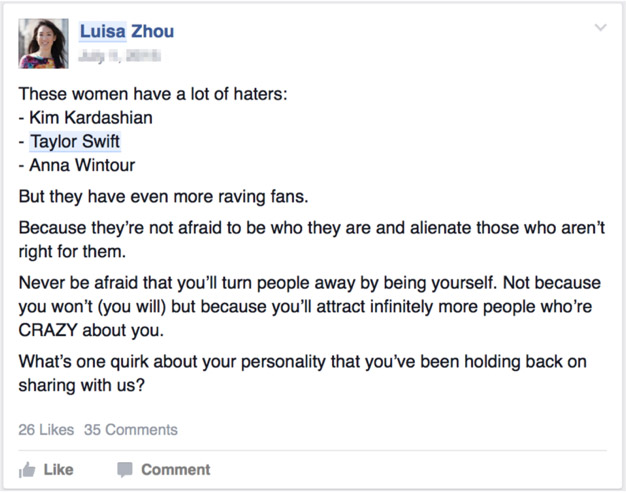
Today, I write emails and sales pages that sell services and programs worth multiple seven figures. But it took that trial and error to get where I am today.
That said, understanding the basics of copywriting is key. Here’s what you need to know.
Copywriting 101
You write copy for social media, email list, blog posts, landing pages, and sales pages.
These different types of copywriting can have different goals – to communicate something, to build your brand, or to get people to take action.
For instance, if you communicate news about your business, your primary goal isn’t to get people to buy right away. Instead, it’s to build your brand and let people know of the change in your company.
Another form of copywriting, direct response copywriting, focuses on getting people to take the next step (whether to engage, like, respond, or buy).
A sales email that you send out to your email list to pitch your product is direct response copywriting.
Direct response copywriting is what you use to sell your services. And to master this skill, you need to understand your audience.
You need to know what makes your ideal clients tick – what are the reasons they want your services? What words do they use to describe their challenges? What do they ultimately want after having worked with you?
And the first step to understanding your audience is to do market research. That’s what we’ll look at next.
Market research
All copywriting starts with market research. Without understanding your audience, you can’t create copy that speaks to them.
However, don’t overcomplicate this step. Yes, market research is crucial for learning how to talk to your audience.
But you don’t have to overdo it.
Online research
Instead, start by doing online research and looking into similar programs, customer reviews, and discussions your potential clients are having in online groups (like Reddit, LinkedIn, or Facebook groups).
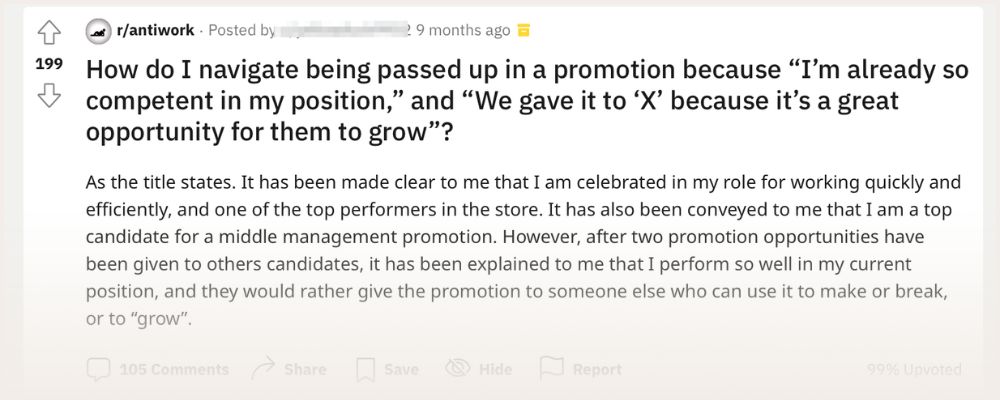
Take notes of how others price their coaching programs, what they talk about on their websites and their sales pages, and how people talk about their challenges and dreams in online groups.
A great way to find those discussions is to search for relevant keywords; for instance, “getting a promotion” on Reddit. Then, read through relevant discussion threads.
With this exercise, you’ll get an idea of how to talk about your services in the way your dream clients talk about them.
However, you need to take one more step – talk to your audience.
Interview your audience
To truly understand your audience, you need to talk to them.
However, this doesn’t have to be complicated. Get on the phone (or Zoom) with three people and ask why they want what you sell. What do they struggle with and why? What would their ideal situation look like? And most importantly, are they willing and able to pay for your coaching?
All of this information will be invaluable when you start writing your copy. In fact, you can often directly use the exact same words that people in your audience use when describing their situation.
By using those words, your copy will resonate with others who are most likely going through the same thing.
And that’s how you write irresistible copy.
That’s copywriting on a practical level. However, to learn more about what goes into great copywriting, let’s also look at the theoretical level – copywriting formulas. You don’t necessarily need to study these in detail at this point (the most important thing is to practice!), but it’s good to know the theory behind writing effective copy.
Get the Ultimate Guide
for building a
6-Figure Coaching Business so you can achieve more freedom!
Copywriting formulas
Here are some of the best-known copywriting formulas. Use them to help you put your copy on paper.
However, while they can be helpful to structure your copy, don’t use them as a crutch – what’s far more important is that you use language that resonates with your audience.
AIDA
AIDA stands for Attention – Interest – Desire – Action. You build your text with the following prompts:
- Attention: Get the reader’s attention.
- Interest: Keep the reader engaged with interesting information that appeals to them.
- Desire: Show the benefits of your coaching.
- Action: Ask readers to take the next step (like, buy, sign up for your newsletter…).
Your text should start with something attention grabbing, often by describing your readers’ challenges or dreams. Then, you move on to sharing how they can solve their problem, the results they get when they do, and, finally, ask them to take action.
The 4 C’s
The four C’s are:
- Clear
- Concise
- Compelling
- Credible
Keeping these in mind helps you stay focused on what your copy should be about. Include all of them in your text and your copy will improve.
The five objections
Even if people want your coaching package, many of them will have objections based on their fears or beliefs. The five objections are:
1. I don’t have enough time.
2. I don’t have enough money.
3. It won’t work for me.
4. I don’t believe you.
5. I don’t need it.
You might not be able to solve them all in your copy. But keeping in mind that people will have objections is key for writing convincing copy.
How can you build trust and show that your coaching works? Do you have testimonials to share? Case studies?
Especially testimonials that speak to your audience’s objections will be helpful.
So what?
One way to test your writing is to ask yourself, “so what?”
How does your coaching help them?
Why should people choose your coaching?
For example:
Buy my health coaching program.
So what?
So that you’ll lose weight, reduce your risk of becoming pre-deabetic, and fitting into your old clothes.
Brand archetypes
Finally, I want to address brand archetypes because so many copywriters talk about them. Brand archetypes are based on Carl Jung’s theory of personality archetypes that can be recognized in storytelling.
There are 12 archetypes:
- Outlaw
- Magician
- Hero
- Lover
- Jester
- Everyman
- Caregiver
- Ruler
- Creator
- Innocent
- Sage
- Explorer.
These archetypes are used to create your brand voice and write copy that targets each archetype.
Personally, I’m not a fan of using brand archetypes. They complicate things far more than is needed. While, yes, they can be effective when building brands, you don’t need them to write good copy.
Instead, focus on the basics – your audience’s pain points and goals and how your coaching helps them.
Now you have a few copywriting formulas to work with. Next, let’s take a look at the copywriters you can learn from.
Study great copywriters
Who are the best copywriters out there?
Some of the “greats” are:
- Gary Halbert
- Dan Kennedy
- David Ogilvy
- Gary Bencivenga
I’ve listed a few of their books at the end of this article. I suggest you read them and study their work.
Again, though, you don’t need to complicate this.
While, yes, it’s helpful to familiarize yourself with their work, the most important thing is to get out there and practice.
Take a copywriting course
One of the fastest ways to learn copy is to learn from people who have already done it through an online course.
Get the Ultimate Guide
for building a
6-Figure Coaching Business so you can achieve more freedom!
After all, courses are a way to learn through other people’s experience faster than you would through your own trial and error.
My own copywriting courses include:
Client Captivation
Client Captivation teaches you the basics of copywriting. It’s not for advanced copywriters – but if you’re just starting out, it’s a great way to learn copywriting faster.
You’ll learn how to use words to connect with people, even if you’re not a great writer.
Here’s just one student result:

Sold Out Sales Pages
Sold Out Sales Pages is not a copywriting course per se, but it teaches you how to write sales pages. If that’s the specific thing you need help with, then SOSP can be helpful. You get proven templates to use for the different services or products you might be selling in your coaching business.
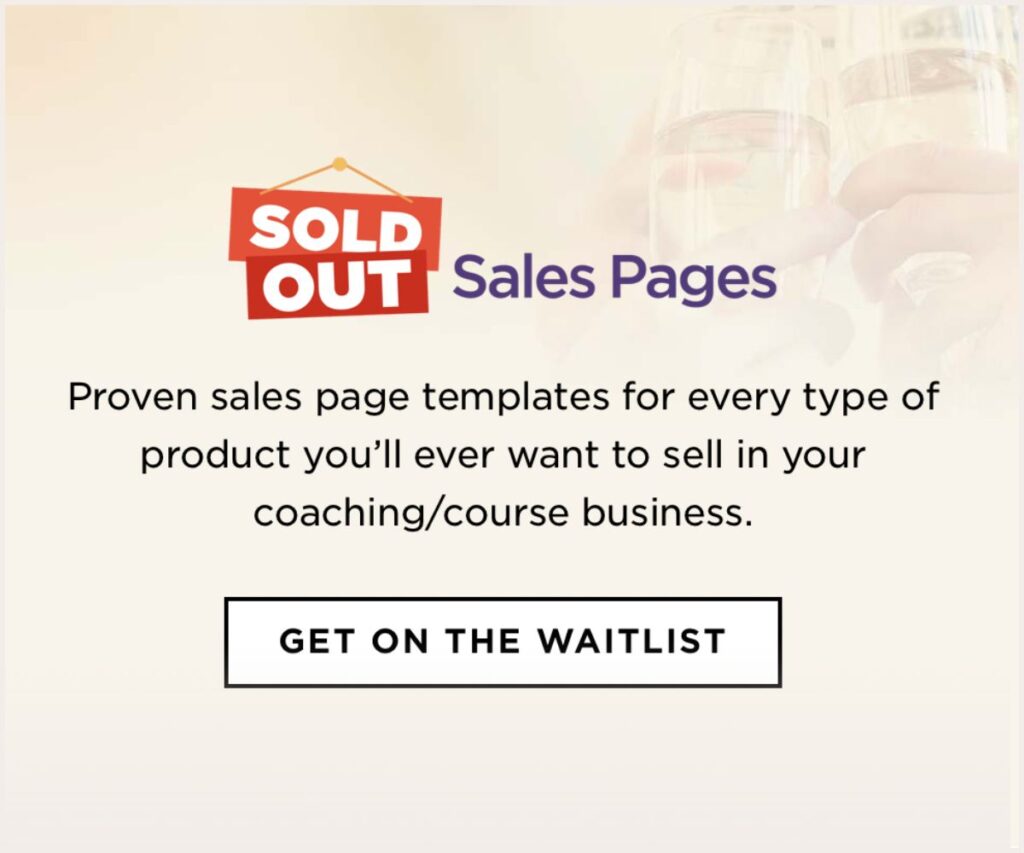
Sold Out Emails
Sold Out Emails doesn’t focus on just writing emails, but also teaches you how to strategize your email campaigns. This is not a copywriting course, but you’ll learn email copywriting in the process.
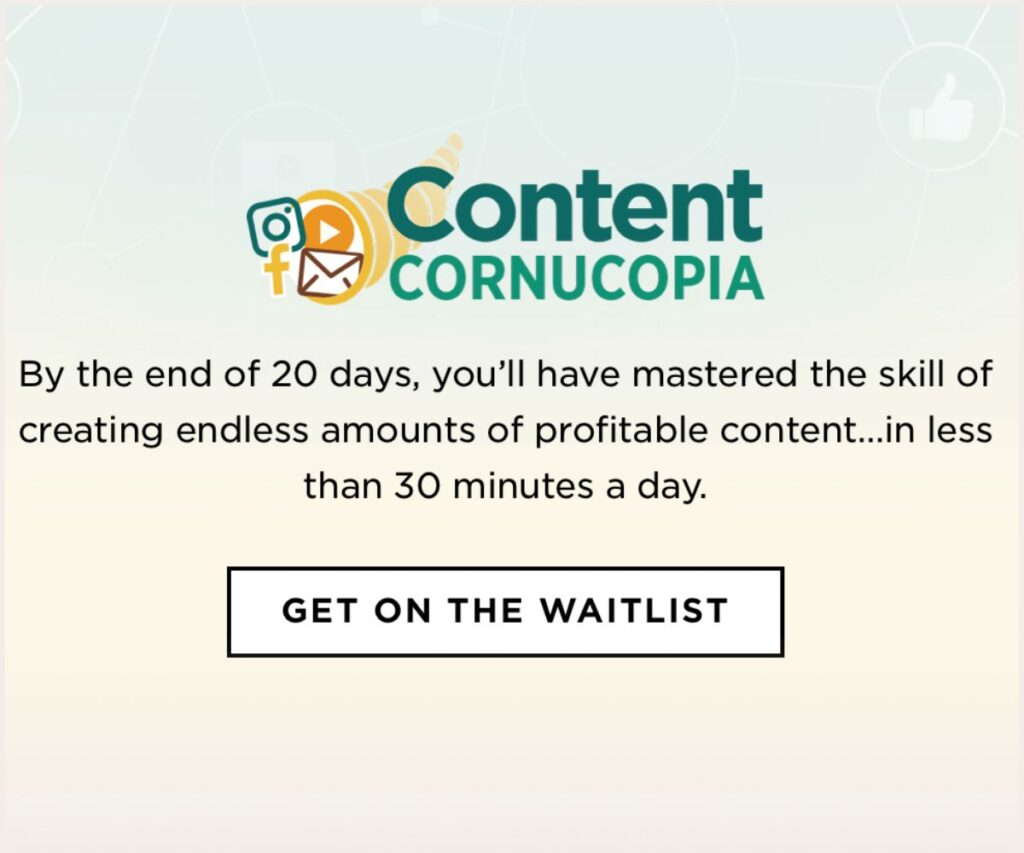
Content Cornucopia
If you struggle with creating social media posts, content cornucopia can help. You’ll learn how to create content in less than 30 minutes by following this course for 20 days. So while we don’t talk about just copywriting, Content Cornucopia teaches you how to write content fast.
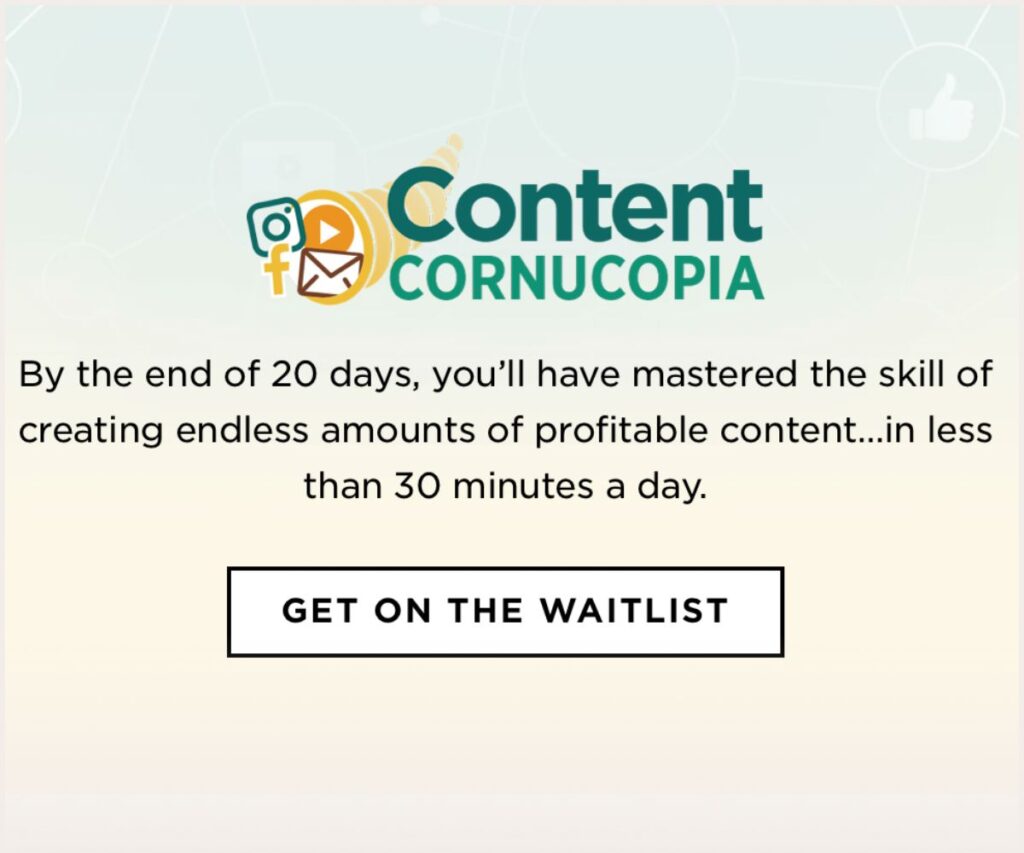
And if you want somewhere simpler to get started, take a look at this short video where I show you how to create content fast and easily:
Now you know how to create persuasive copy that attracts more coaching clients. But how do you create website content or sales page copy? That’s what we’ll look at next.
Website copy for coaches
Your website typically consists of a home page, an about page, a services page, and a contact page. If you have a blog, then you also have a blog page.
Most importantly, you need to know how to write copy for your home page, about, and services page.
Each of these requires a slightly different approach, but it all comes down to showing the benefits and transformation that you offer.
Homepage
On your homepage, be very clear about what you offer. If you’re a health coach, show on your homepage what type of health coach you are.
And since most people won’t buy from you when they first visit your website, you lose them forever if you don’t get them to join your audience right away. That’s why your homepage needs to work towards one goal – to get their contact information.
The best way to do this is to offer a lead magnet (typically a free PDF) for people who give their email and sign up for your email list.
Here’s one of my own lead magnets:
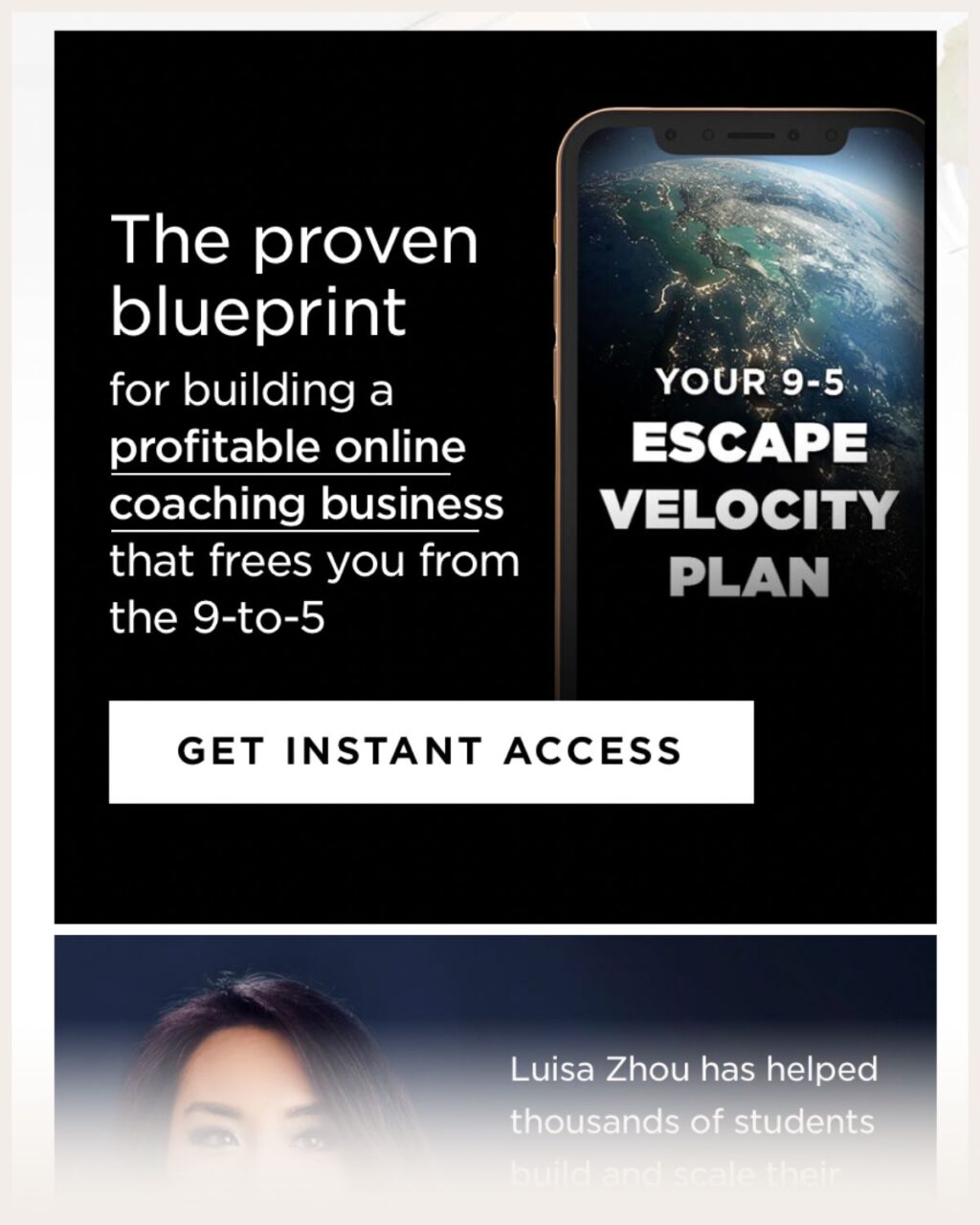
About page
About pages are the second most visited pages after home pages, so it’s a great opportunity to build your credibility and get people to opt-in to your newsletter.
On your about page, you tell your story. But above all, tell your audience’s story by including their frustrations and goals.
Include opt-in forms throughout your about page.
Note: Your about page should also include a bio. Read more here on how to create a coach profile for your about page.
Here’s a snippet of my own about page:
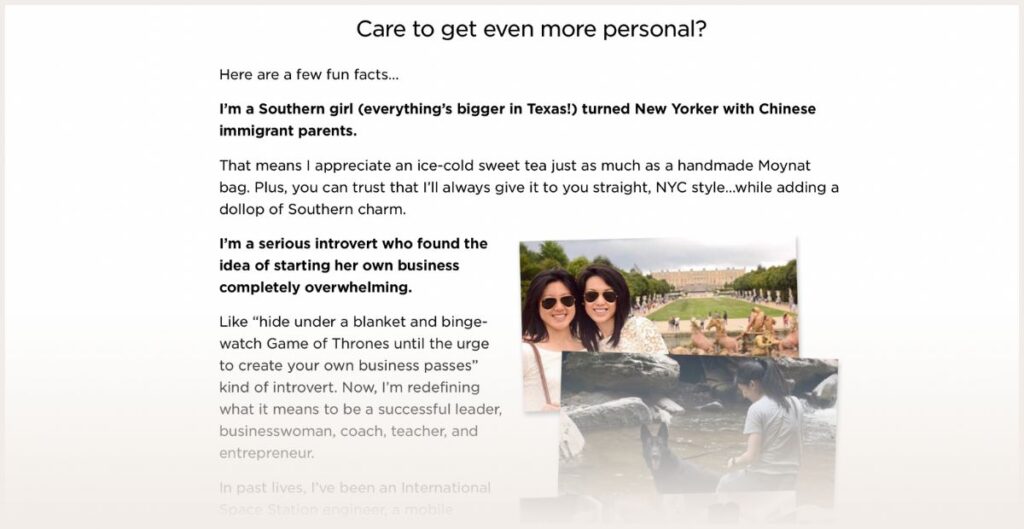
Services page
Finally, we have the services page or “work with me” page. This is where you sell your services.
Check out my tips on sales page copywriting below. Your services page should describe your offer and its benefits, and end with a call to action for people to buy your program.
If you want to learn more about writing copy for your website, take a look at my course “Employee to Entrepreneur.” The course teaches you the A-Z of building a coaching business, including how to write website copy for each of these pages.
I also talk more about building a coaching website (and the copy to write) in this post on coaching websites.
Sales page copy for coaches
The objective of your sales pages is to get people to buy your coaching program or your other services and products. Here’s what to include:
Catch readers’ attention
One of the most important elements of your sales page is the headline. You see, people leave websites within 10-20 seconds. You need to catch their attention to get them to read your sales page.
And the first thing they see is your headline, which sets the tone for your entire sales page. So put effort into crafting a headline that speaks to your audience and makes them see why YOUR program is right for them.
Show the benefits of your program
A big mistake most new copywriters make is to focus all their energy on talking about the features they offer – the number of calls, PDFs…But what your ideal clients really care about is the transformation and how your program helps them achieve their goals.
So focus on the benefits of your program. What will clients get when they buy your program? Will their lives be easier or happier?
Build trust
Finally, your sales page also needs to build trust. People need proof that what you say works before they invest in you.
And the best way is to use testimonials and case studies. Your testimonials could be short text snippets or video content. You can use online reviews and longer case studies.
Like this short video testimonial a client left for my ETE program:
The point is, they need to build your credibility. So instead of getting testimonials that say, “I loved working with this coach,” get testimonials that say “This coach helped me lose 15 pounds, fit into my old clothes, reduce my risk for diabetes, and feel more comfortable in my own skin.”
And if you want more, my course “Sold Out Sales Pages” teaches you how to create converting sales pages.
Next, let’s take a look at how you can learn more about copywriting with the best copywriting books.
The best copywriting books
What are the best copywriting books out there?
My two favorites are:
1) The Ultimate Sales Letter – Dan Kennedy
“The Ultimate Sales Letter” is a classic in the copywriting world. This is a practical copywriting book and it’s excellent for new(er) copywriters. The book is specifically about sales letters, but you’ll learn a lot about general copywriting.
2) Breakthrough Advertising – Eugene Schwartz
This is a dense and pricey book that’s somewhat hard to come by. That’s why “Breakthrough Advertising” isn’t the best book to start with. Instead, this is a book for more advanced copywriters, so get your own copy once you’ve practiced copywriting a bit more.
Other books
A few other, noteworthy books are these copywriting books:
Ogilvy on Advertising – David Ogilvy
Ogilvy is known as the “father of advertising” and “Ogilvy on Advertising” isn’t just a book on copywriting – it contains information on how to start an agency and get a job in the industry. But the parts that talk about creating advertising that sells are great resources.
The Boron Letters – Gary Halbert
“The Boron Letters” is a series of letters by Gary Halbert to his son that talk about copywriting and selling. However, if you’re more interested in studying his letters, you can find his published letters online.
Get the Ultimate Guide
for building a
6-Figure Coaching Business so you can achieve more freedom!
Scientific Advertising – Claude Hopkins
“Scientific Advertising” was actually written in 1923 – for print and in a world without the internet. But the principles of good copywriting are as true today as they were then, and that’s why this is a relevant book to this day.
Influence: The Psychology of Persuasion – Robert B Cialdini
“Influence” isn’t exactly a copywriting book, but it talks about what makes people decide one way or another. Cialdini presents decades of research on what makes people tick. “Influence” is a great book to understand people better.
Over to you!
There you have it! That’s what you need to know about copywriting for coaches.
You don’t have to write perfect copy to grow your business. And you probably shouldn’t – people want to learn who YOU are.
However, selling your services is just one part of building a profitable coaching business.
You also need the right strategy to build a business that attracts the right people – and allows you to quit your 9-5, make a good income, and decide when and how you work.
Want to learn more?
Get my free blueprint to building a six-figure coaching business:
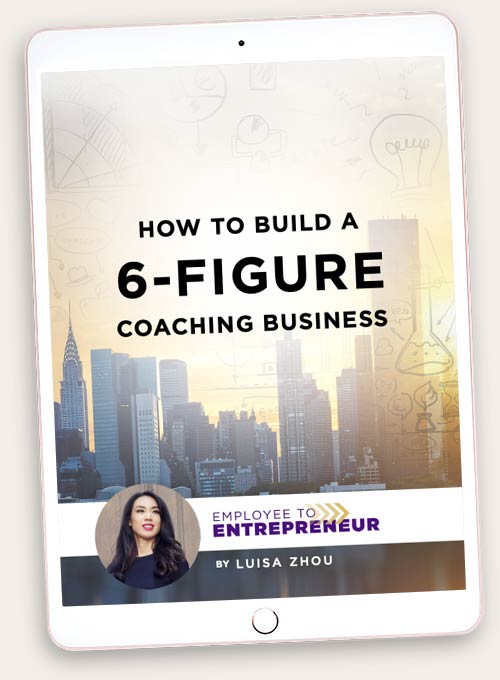
Want to Build a 6-Figure Coaching Business So You Can Achieve More Freedom?
Get Instant Access To My FREE Ultimate Guide Below!
When you sign up, you’ll also receive regular updates on building a successful online business.
Read more:
Hold a Coaching Discovery Call
